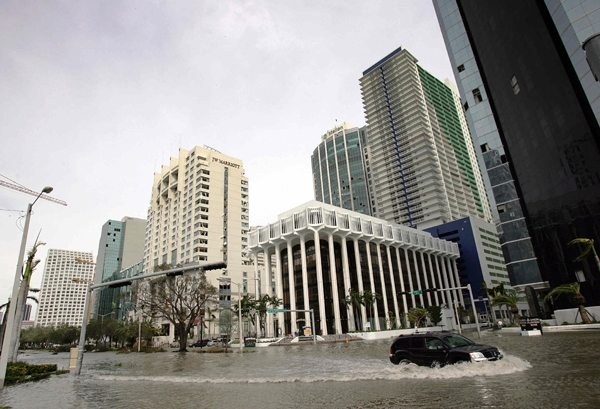You are here
Fri, 2013-06-28 22:02 — admin

Miami after Hurricane Wilma in 2005. Roberto Schmidt/AFP/Getty Images
submitted by Albert Gomez
By century's end, rising sea levels will turn the nation's urban fantasyland into an American Atlantis. But long before the city is completely underwater, chaos will begin
rollingstone.com - by Jeff Goodell - June 20, 2013
When the water receded after Hurricane Milo of 2030, there was a foot of sand covering the famous bow-tie floor in the lobby of the Fontainebleau hotel in Miami Beach. A dead manatee floated in the pool where Elvis had once swum. Most of the damage occurred not from the hurricane's 175-mph winds, but from the 24-foot storm surge that overwhelmed the low-lying city.
Groups this Group Post belongs to:



Comments
It's Not a Question of If. It's a Question of When
thinkprogress.org - Joe Romm - June 23, 2013
Scientist: ‘Miami, As We Know It Today, Is Doomed. It’s Not A Question Of If. It’s A Question Of When.’
Jeff Goodell has a must-read piece in Rolling Stone, “Goodbye, Miami: By century’s end, rising sea levels will turn the nation’s urban fantasyland into an American Atlantis. But long before the city is completely underwater, chaos will begin.”
Goodell has talked to many of the leading experts on Miami including Harold Wanless, chair of University of Miami’s geological sciences, department, source of the headline quote. The reason climate change dooms Miami is a combination of sea level rise, the inevitability of ever more severe storms and storm surges — and its fateful, fatal geology and topology, which puts “more than $416 billion in assets at risk to storm-related flooding and sea-level rise”:
The latest research “suggests that sea level could rise more than six feet by the end of the century,” as Goodell notes, and “Wanless believes that it could continue rising a foot each decade after that.”
[read entire article]